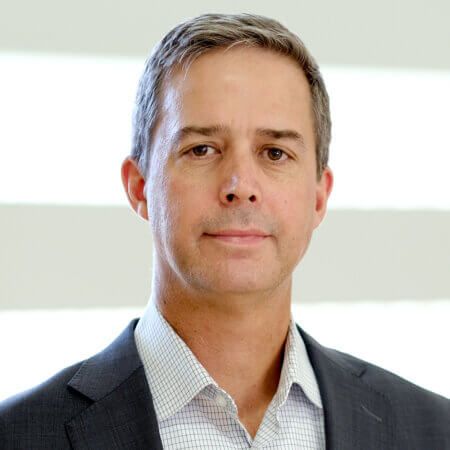
In a low-interest rate environment, investors should look to dividend-paying stocks to create an income generation portfolio.
Income Opportunities in a Low-Yield World
Matt Burdett: When we look today, we look at the menu of income producing securities, a huge portion of the menu it’s not going to do its intended goal which is to provide a real income stream. It’s kind of like choosing things off the menu that are going to make you sick and you know it. So, why would you choose them?
Charles Roth: Welcome to another episode of Away from the Noise, Thornburg Investment Management’s podcast on key investment topics, economics and market developments of the day. I’m Charles Roth, Global Markets Editor at Thornburg. We’re joined today by Matt Burdett who runs our global hybrid income strategies as well as our international equity strategies. A chemist by training, Matt you worked at a pharmaceutical company before pursing your MBA and then getting into finance. What’s your take on the vaccination campaigns that we’re seeing globally?
Matt Burdett: That is the most pertinent driver of many things getting out of this pandemic, number one, and, number two, obviously, influencing the market and sector performance. You know, look, I think, we can all be very excited by the pace at which science moved to solve this problem. You know, the, MRNA vaccines, the first of this type of technology has proven to be just an incredible advancement at just the right time. The most important point about all of these vaccines is that, even if you get infected after being vaccinated, the severity of the disease is not that bad. So the fact that these vaccines are able to keep people either protected from being infected or, you know, really more importantly keep them from being severely ill. That’s the real positive here.
Charles Roth: Yeah. And, and I suppose key to the reopening trade and, so between vaccinations and natural spread, do you see life getting back to normal in parts of the world, say as soon as this summer? And perhaps other parts of the world by next year?
Matt Burdett: It’s possible that we have, you know, more normal conditions in some places, possibly the U.S. in the summertime, maybe late summer. I mean, I’m not an epidemiologist by any means, but we are advancing our vaccination rates quickly, and importantly, we unfortunately had a lot of people infected already. So when you combine those two here in the U.S., the herd immunity, you know, might be easier to achieve here than elsewhere, and I think that really is the main determinant of getting back to normal. You know, Europe is slower. They’re behind, so it’s not clear when they kind of get to a better run rate. It is happening. There is policy coming out to try and speed that up. I think the good thing is, you know, we now have four vaccines, at least in the developed world that are widely available, plus you give the Chinese and the Russian vaccines that are going be out. You know, you’re going to get a lot of people vaccinated in calendar 21, but there’s one thing, it is a big unknown to point out is, you know, it is somewhat of a race against the mutations. And so far we’ve seen good results from the vaccines versus these mutants in terms of not having the severity of illness. So that’s positive. But the virus can mutate to something that does not respond to the vaccinations, so the pace of vaccinations really is the best path towards normalization.
Charles Roth: Why don’t we turn to your paper on the income landscape. It’s called “Past Is Prologue with a question mark, Not for Income Investors in a Low-Yield World,” and really one of my takeaways from this white paper is this huge rally that we’ve seen in treasuries, certainly but really in fixed income over the last 40 years is kind of drawing to an end. We’re now in a world where we have negative interest rates. We have extremely low yield. We have ZIRP, zero interest rate policy and NIRP, negative interest rate policy, pursued in Europe and in Japan, and that’s made it awfully hard for income investors. What, why is this such a sort of a dramatic point in financial history?
Matt Burdett: It’s, I would say, one of the biggest problems facing people who, you know, who want to retire and have that nest egg produce an income stream for them that will allow them to, to service their spending needs and, and other things. Right? And because it’s happened over 40 years, oddly it goes by somewhat unnoticed because it’s so gradual. Right? There are many people who have never seen anything else but falling bond yields. You know the reason why we wrote this paper was because, you know, people have enjoyed a certain level of income generation Add link to https://www.thornburg.com/insight-commentary/the-quick-take/rethinking-your-income-strategy/ that was largely a function of the bond portfolio, and what you see and what we highlight in the paper is that stream of income has just fallen over time and given where yields are today, for the next 40 years will not produce anywhere near the same level of income that would have been the case, you know, in prior decades. So, what we’re trying to highlight is there are other sources of income that you’re going to have to consider. The yields have been compressed so much that in order for you to have a similar income stream, you’re going to have to do one of two things. One, you’re going to have to have a whole lot more capital saved. Two, you’re going to have to look for other sources of income generation, and for most people those sources are going to come from the public markets, the private sources, but most people don’t have access to that, and it’s more complicated. So that was really, the point, just to highlight, just to say, from here things are going to have to be different, and you’re going to have to utilize other tools. And then we laid out you know, some tools that we thought were a sensible compliment to what was historically bond focused. Before we get into those tools, I’d like to just dwell a little bit on starting points. So, obviously we had a much different starting point, in the late 70s, early 80s in terms of yields and inflation, and 40 years later, it’s a different starting point for the next 40 years, and right now one of the things that somewhat boggles the mind, going back to NIRP, is that we have globally upwards of 17 trillion in negative yielding debt, so lenders are paying to lend money, which doesn’t really make sense.
Charles Roth: Can you put that into context? What does that mean?
Matt Burdett: So, in simple terms, negative yielding debt means that you pay a premium today to buy a bond to get back less money at some point in the future. Okay? Now, you’ll collect some coupon along the way, but you’re paying a, a higher price for the bond today than what you’re going to get back later. And the real reason that this has happened has been all of the central bank activities around quantitative easing that has gone on in the U.S., and really all of the developed world, and when central banks compete with private investors, they don’t have to worry about performance or inflows and outflows into their portfolios because the central banks are in charge of the currency. They’re non-economic buyers, and for them buying the bonds is a monetary policy tool that they have created, you know, started at the end of the great financial crisis and this was to get us out of the terrible situation we were in. It then rolled into a Eurozone crisis in 2011 and resulted in more unconventional policies, and really what’s happened is because the balance sheets of all the central banks have gone up by so much, they’ve just out competed private investors for these bonds which now trade at material premiums in price, and therefore, very low or negative yields. And, and so what that means is that when we look today, we look at the menu of income producing securities, a huge portion of the menu it’s not going to do its intended goal which is to provide a real income stream. It’s kind of like choosing things off the menu that are going to make you sick and you know it. So, why would you choose them?
Charles Roth: Perhaps just as collateral. You know, I can imagine some of these institutions have, say insureds, pension funds, the like and endowments more than as an investment. So collateral to leverage, say other parts of the portfolio.
Matt Burdett: Correct. I mean, there’s definitely many large institutional financial market participants. Take European insurers is a good example who have massive bond portfolios as they try and match, you know, especially on the live side, they’re trying to match very long duration liabilities that they have to pay out with assets that are going have a yield slightly in excess of what they’re expected to pay out in terms of liabilities. And the regulators for these types of companies actually judge their solvency position, that is, their ability to meet those liabilities and still have excess capital left. You know that solvency calculation is based off of certain allocation of these very same bonds that we’re talking about that have negative yields, so they can’t just dump all the bond. You know, you’re right. The use of these bonds is not for the income generation. It’s for other purposes.
Charles Roth: Let’s talk about the tools that you use and set the table in that respect. I’m just wondering how you view both the income landscape within, so there’s those other tools that you look to generate income as well as the volatility that’s kind of played into the market with rising yield curves.
Matt Burdett: No. It’s a great question, and I think that’s the setting for the world we live in, and people should get used to higher volatility across financial assets. And, in fact, that’s what you’ve observed really since the financial crisis. A greater number of volatility shocks that have happened. We have seen the U.S. 10-year treasury yield rise. It’s doubled, and it’s not so much the level of yield. It’s the pace at which it went up, and that’s what makes markets a little uncomfortable. Now, you know, it’s really a question of inflation, and is inflation coming. We, we’ve been waiting for inflation for a long time. It kind of peaks it’s head out a little bit, but then it goes back into its cave, and we don’t really see much of it. And, in fact, the lack of inflation has been a primary reason for central bank policy that, that we’ve seen. When we think about the environment, we’re in now, we’re in a very dynamic and quite honestly it’s a very exciting time in the market, because you have all these things going on. Look, when we look at the numbers in 2021, it really doesn’t matter what number you want to look at. The comparables that is the year-over-year percent change, for many inflation inputs will be very high because last year they cratered, and so as you, you move through, think about oil. Right? I mean, remember last year there was a brief moment where the price of oil was negative, if you can believe that. Now, that’s not a real price, but it was a observed price for a moment. Oil’s now about 70 dollars so it’s recovered, and there are other commodities, many metals, agricultural products. And so, you know, this commodity basket is definitely up coming off of a low base. We still have a lot of slack in the economy in terms of labor, so wage inflation pressures, you know, are not so visible, and maybe they will be and maybe they won’t be, but I think that’s the fear is that you will see higher inflation, and as of now, it’s yet to be determined what the sustainable inflation will be. The fed has been very clear that they’re okay exceeding their target of averaging 2 percent. Right? To average they’ve been below that, so to average 2 percent you can be above it for a while, and they’ve indicated they’re okay with that. But what really matters is what the bond market does. And so that’s what we’ve seen recently where yields have risen dramatically, partly due to inflation expectations going up, but also partly in my mind, due to the fact that everyone knows how much treasury issuance is coming. We highlighted in a white paper we wrote just to show people, based on the CBO estimates, there is a massive, massive wall of treasury issuance coming over the coming years to fund all the stimulus and everything else that’s going on. It really boils down to does the barn, bond market want to buy these treasuries at this yield? Okay. And it seemed like, you know, for the last couple weeks, the market said no, we’re going to require a higher yield. It stabilized a little bit now, but that’s the key question, I think, that we have to think about because the 10-year treasury yield, U.S. Treasury yield, is the anchor for all other yields really in the world. Now, I would highlight if you looked at sovereign yields in many European countries, they’re well, well below the U.S. yield, and they’re below the U.S. yield for the reasons we talked about. Central banks are buying the issuance. So, getting to the other part of your question, what are the tools then can we use in building an income portfolio. For us, we think the most obvious one is global dividend paying stocks simply because we have had an incredible run in financial asset prices of all types over the last 10-plus years. Growth stocks were, in particular U.S. growth stocks, were by far the best performer. Dividends actually were not that important the last 10 years. If you look at the S&P 500, and you look at the average annual return by decade going back to 1871, and we put a table in the white paper that shows this, the last decade was the second lowest decade in terms of dividend share of total return. Over the entire series going back to 1871. It was little less than 17 percent of your total return on average per annum was from dividends. The rest was price. Throughout time it’s usually about 50 percent. What we tried to highlight here is that these cycles of style performance let’s call it can be long and persistent but on average dividends are about have of your return. So we enter a world where bond yields are at record lows and you need a choice and so we highlighted dividend paying stocks as that choice.
Charles Roth: So you’re a bottom-up stock picker. Your portfolio is really from, you know, any sort of quick analysis, it’s really kind of a quality-value portfolio where you have hard cash flows, leverages is not out of proportion, and then you have dividend payers and generally you want your companies to increase their dividends. So, I guess, my question is when you go into those types of stock, and obviously what has done best lately has been energy and financials for that matter. How does that help in terms of mitigating portfolio volatility within this, sort of, broader market context of increasing volatility given steepening yield curves and quite high debt levels, you know, among governments, among corporates sort of generally, and even households in various countries to various degrees.
Matt Burdett: Well, let me just kind of compartmentalize a lot of what you said into some answers. So, ideally what one would like to have is a portfolio that produces a growing income stream, and the capital base grows. You can attain that with a dividend portfolio because, you know, you want the businesses that are growing. You know, they don’t have to be growing at extremely high rates, but you want them to be growing, because that shows signs of health of not only the company, but the industry structure that they’re in, and then you’d like them to have a capital allocation philosophy which we call the willingness to pay dividends such that you share in that growth through not only a higher stock price as the earnings grow but also in getting more income out of that investment. So that’s kind of the ultimate thing that you’re looking for. Now, I think markets will be more volatile from here. And when you get to the zero bound in terms of interest rates which we’ve been in, you’re going to have those shocks because the zero bound influences financial asset price movements because there’s leverage in the system, and when I say in the system, I mean the financial system. Obviously, companies’ balance sheets are levered also, but financial market participants can borrow at near zero, take that leverage and go buy other financial assets. And so, when volatility hits financial asset prices, they could get margin calls on that leverage that they viewed as cheap, but when volatility rises, you know, the leverage magnifies the, the price movements because you start to see margin calls and forced selling, which is basically what happened in the peak of the pandemic last year, and you saw treasury yields were spiking while stocks were going down massively at the same time.
Charles Roth: It was kind of interesting, just to get back to the point on collateral, so treasuries spiked, and then they kind of sold off, and I think it was because people needed to cash in their treasuries to meet those margin calls which was a very interesting dynamic, but ultimately the leverage in the system hasn’t really diminished since then, and so that’s why the volatility seems to be more frequent. Is that a correct take?
Matt Burdett: Yeah. I think that’s right. I mean, look, what happened, you know, levered players who used treasuries as collateral were getting margin calls, then forced to sell a, a variety of assets, and this is what drove the higher yields in treasuries. Right? And then the fed came out with various programs of lending, and primarily to make sure that credit transmission was not interrupted. Now, an unfortunate consequence of that policy is that some of these leveraged players are also going to benefit, and so the leverage then becomes available again, and you have another period of volatility and kind of the same thing happens. I think all of this is just a consequence of the zero bound. If you don’t have to pay very much for borrowed money, you probably borrow it. If it means you take more risk to get an actual return, then you probably, some people, will do that. Now, that’s not what we do, but that’s what’s happening in the market, and we all have to live in it. And what we have to do when we build portfolios is say, you know what, we can analyze a company, we can analyze an industry, we can look at the earnings and the cash flow, and we know how much debt they have to service, and we can decide how much we should pay for that cashflow stream that’s going to also pay us dividends. And so we can select company by company what we believe are good values in a market that we’re in. Now, that doesn’t mean they’re free of volatility for the reasons I mentioned. Right? It comes with the territory of having the central bank policy that we’ve had for the last 10 years, and what does the unwind of this policy look like? I’m really not sure. I no one knows to be honest.
Charles Roth: Perhaps we got a glimpse in the fourth quarter of 2018 when the fed was simultaneously tapering its balance sheet as well as raising rates. It got quite volatile at, at that time, but perhaps volatility is an opportunity, particularly for portfolios like yours that don’t use leverage.
Matt Burdett: Yeah. No. Look, I think that’s right. When volatility as we’ve seen certainly the last year or so, what you find is there are just phenomenal opportunities that arise, and it never feels good when you’re in the moment, but when you take a step back and look at what the underlying business is doing, how robust that business could be, should be, you can sensitize those things and have good conviction. We don’t use leverage. It works both ways. Right? It’s great on the way up, but it’s worse on the way down, and that’s just something we’re going to have to live within this world, but, you know, if diversified portfolio of equities that are producing income that’s multiples of the yield you would earn on a comparable bond portfolio of, you know, investment-grade portfolio, you know, over, over many years from now, is probably going to work out pretty well. And again, I say that just because of the starting point.
Charles Roth: Well, Matt, thank you so much. Appreciate your time.
Matt Burdett: Absolutely, happy to chat. Thanks very much for your interest.
Charles Roth: If you would like to learn more about Matt’s take on the income landscape, please check out his white paper on Thornburg.com. Add link to homepage. It’s entitled “Past is Prologue? Not for Income Investors in a Low-Yield World.” Today’s episode was produced and edited by Michael Nelson. You can find us on Apple, Spotify, Google podcasts or your favorite audio provider, or by visiting Thornburg.com/podcasts. Subscribe, rate us and leave a review, and please join us next time on Away from the Noise.
Important Information
The views expressed are subject to change and do not necessarily reflect the views of Thornburg Investment Management, Inc. This information should not be relied upon as a recommendation or investment advice and is not intended to predict the performance of any investment or market.
This is not a solicitation or offer for any product or service. Nor is it a complete analysis of every material fact concerning any market, industry, or investment. Data has been obtained from sources considered reliable, but Thornburg makes no representations as to the completeness or accuracy of such information and has no obligation to provide updates or changes. Thornburg does not accept any responsibility and cannot be held liable for any person’s use of or reliance on the information and opinions contained herein.
Investments carry risks, including possible loss of principal.
Outside the United States
This is directed to INVESTMENT PROFESSIONALS AND INSTITUTIONAL INVESTORS ONLY and is not intended for use by any person or entity in any jurisdiction or country where such distribution or use would be contrary to the laws or regulations applicable to their place of citizenship, domicile or residence.
Thornburg is regulated by the U.S. Securities and Exchange Commission under U.S. laws which may differ materially from laws in other jurisdictions. Any entity or person forwarding this to other parties takes full responsibility for ensuring compliance with applicable securities laws in connection with its distribution.
For United Kingdom: This communication is issued by Thornburg Investment Management Ltd. (“TIM Ltd.”) and approved by Robert Quinn Advisory LLP which is authorised and regulated by the UK Financial Conduct Authority (“FCA”). TIM Ltd. is an appointed representative of Robert Quinn Advisory LLP.
This communication is exclusively intended for persons who are Professional Clients or Eligible Counterparties for the purposes of the FCA Rules and other persons should not act or rely on it. This communication is not intended for use by any person or entity in any jurisdiction or country where such distribution or use would be contrary to local law or regulation.
The past 40 years have been rewarding for fixed income investors, but as yields have fallen over time, the future looks far more challenging. Portfolio Manager Matt Burdett lays out compelling income options for flexible, nimble investors.
Transcript:
Matt Burdett: When we look today, we look at the menu of income producing securities, a huge portion of the menu it’s not going to do its intended goal which is to provide a real income stream. It’s kind of like choosing things off the menu that are going to make you sick and you know it. So, why would you choose them?
Charles Roth: Welcome to another episode of Away from the Noise, Thornburg Investment Management’s podcast on key investment topics, economics and market developments of the day. I’m Charles Roth, Global Markets Editor at Thornburg. We’re joined today by Matt Burdett who runs our global hybrid income strategies as well as our international equity strategies. A chemist by training, Matt you worked at a pharmaceutical company before pursing your MBA and then getting into finance. What’s your take on the vaccination campaigns that we’re seeing globally?
Post-Pandemic Economic Recovery
Matt Burdett: That is the most pertinent driver of many things getting out of this pandemic, number one, and, number two, obviously, influencing the market and sector performance. You know, look, I think, we can all be very excited by the pace at which science moved to solve this problem. You know, the, MRNA vaccines, the first of this type of technology has proven to be just an incredible advancement at just the right time. The most important point about all of these vaccines is that, even if you get infected after being vaccinated, the severity of the disease is not that bad. So the fact that these vaccines are able to keep people either protected from being infected or, you know, really more importantly keep them from being severely ill. That’s the real positive here.
Charles Roth: Yeah. And, and I suppose key to the reopening trade and, so between vaccinations and natural spread, do you see life getting back to normal in parts of the world, say as soon as this summer? And perhaps other parts of the world by next year?
Matt Burdett: It’s possible that we have, you know, more normal conditions in some places, possibly the U.S. in the summertime, maybe late summer. I mean, I’m not an epidemiologist by any means, but we are advancing our vaccination rates quickly, and importantly, we unfortunately had a lot of people infected already. So when you combine those two here in the U.S., the herd immunity, you know, might be easier to achieve here than elsewhere, and I think that really is the main determinant of getting back to normal. You know, Europe is slower. They’re behind, so it’s not clear when they kind of get to a better run rate. It is happening. There is policy coming out to try and speed that up. I think the good thing is, you know, we now have four vaccines, at least in the developed world that are widely available, plus you give the Chinese and the Russian vaccines that are going be out. You know, you’re going to get a lot of people vaccinated in calendar 21, but there’s one thing, it is a big unknown to point out is, you know, it is somewhat of a race against the mutations. And so far we’ve seen good results from the vaccines versus these mutants in terms of not having the severity of illness. So that’s positive. But the virus can mutate to something that does not respond to the vaccinations, so the pace of vaccinations really is the best path towards normalization.
Fixed Income Investments & Low Interest Rate Environment
Charles Roth: Why don’t we turn to your paper on the income landscape. It’s called “Past Is Prologue with a question mark, Not for Income Investors in a Low-Yield World,” and really one of my takeaways from this white paper is this huge rally that we’ve seen in treasuries, certainly but really in fixed income over the last 40 years is kind of drawing to an end. We’re now in a world where we have negative interest rates. We have extremely low yield. We have ZIRP, zero interest rate policy and NIRP, negative interest rate policy, pursued in Europe and in Japan, and that’s made it awfully hard for income investors. What, why is this such a sort of a dramatic point in financial history?
Matt Burdett: It’s, I would say, one of the biggest problems facing people who, you know, who want to retire and have that nest egg produce an income stream for them that will allow them to, to service their spending needs and, and other things. Right? And because it’s happened over 40 years, oddly it goes by somewhat unnoticed because it’s so gradual. Right? There are many people who have never seen anything else but falling bond yields. You know the reason why we wrote this paper was because, you know, people have enjoyed a certain level of income generation Add link to https://www.thornburg.com/insight-commentary/the-quick-take/rethinking-your-income-strategy/ that was largely a function of the bond portfolio, and what you see and what we highlight in the paper is that stream of income has just fallen over time and given where yields are today, for the next 40 years will not produce anywhere near the same level of income that would have been the case, you know, in prior decades. So, what we’re trying to highlight is there are other sources of income that you’re going to have to consider. The yields have been compressed so much that in order for you to have a similar income stream, you’re going to have to do one of two things. One, you’re going to have to have a whole lot more capital saved. Two, you’re going to have to look for other sources of income generation, and for most people those sources are going to come from the public markets, the private sources, but most people don’t have access to that, and it’s more complicated. So that was really, the point, just to highlight, just to say, from here things are going to have to be different, and you’re going to have to utilize other tools. And then we laid out you know, some tools that we thought were a sensible compliment to what was historically bond focused. Before we get into those tools, I’d like to just dwell a little bit on starting points. So, obviously we had a much different starting point, in the late 70s, early 80s in terms of yields and inflation, and 40 years later, it’s a different starting point for the next 40 years, and right now one of the things that somewhat boggles the mind, going back to NIRP, is that we have globally upwards of 17 trillion in negative yielding debt, so lenders are paying to lend money, which doesn’t really make sense.
Charles Roth: Can you put that into context? What does that mean?
Matt Burdett: So, in simple terms, negative yielding debt means that you pay a premium today to buy a bond to get back less money at some point in the future. Okay? Now, you’ll collect some coupon along the way, but you’re paying a, a higher price for the bond today than what you’re going to get back later. And the real reason that this has happened has been all of the central bank activities around quantitative easing that has gone on in the U.S., and really all of the developed world, and when central banks compete with private investors, they don’t have to worry about performance or inflows and outflows into their portfolios because the central banks are in charge of the currency. They’re non-economic buyers, and for them buying the bonds is a monetary policy tool that they have created, you know, started at the end of the great financial crisis and this was to get us out of the terrible situation we were in. It then rolled into a Eurozone crisis in 2011 and resulted in more unconventional policies, and really what’s happened is because the balance sheets of all the central banks have gone up by so much, they’ve just out competed private investors for these bonds which now trade at material premiums in price, and therefore, very low or negative yields. And, and so what that means is that when we look today, we look at the menu of income producing securities, a huge portion of the menu it’s not going to do its intended goal which is to provide a real income stream. It’s kind of like choosing things off the menu that are going to make you sick and you know it. So, why would you choose them?
Charles Roth: Perhaps just as collateral. You know, I can imagine some of these institutions have, say insureds, pension funds, the like and endowments more than as an investment. So collateral to leverage, say other parts of the portfolio.
Matt Burdett: Correct. I mean, there’s definitely many large institutional financial market participants. Take European insurers is a good example who have massive bond portfolios as they try and match, you know, especially on the live side, they’re trying to match very long duration liabilities that they have to pay out with assets that are going have a yield slightly in excess of what they’re expected to pay out in terms of liabilities. And the regulators for these types of companies actually judge their solvency position, that is, their ability to meet those liabilities and still have excess capital left. You know that solvency calculation is based off of certain allocation of these very same bonds that we’re talking about that have negative yields, so they can’t just dump all the bond. You know, you’re right. The use of these bonds is not for the income generation. It’s for other purposes.
Investor Portfolio Construction for Income Generation
Charles Roth: Let’s talk about the tools that you use and set the table in that respect. I’m just wondering how you view both the income landscape within, so there’s those other tools that you look to generate income as well as the volatility that’s kind of played into the market with rising yield curves.
Matt Burdett: No. It’s a great question, and I think that’s the setting for the world we live in, and people should get used to higher volatility across financial assets. And, in fact, that’s what you’ve observed really since the financial crisis. A greater number of volatility shocks that have happened. We have seen the U.S. 10-year treasury yield rise. It’s doubled, and it’s not so much the level of yield. It’s the pace at which it went up, and that’s what makes markets a little uncomfortable. Now, you know, it’s really a question of inflation, and is inflation coming. We, we’ve been waiting for inflation for a long time. It kind of peaks it’s head out a little bit, but then it goes back into its cave, and we don’t really see much of it. And, in fact, the lack of inflation has been a primary reason for central bank policy that, that we’ve seen. When we think about the environment, we’re in now, we’re in a very dynamic and quite honestly it’s a very exciting time in the market, because you have all these things going on. Look, when we look at the numbers in 2021, it really doesn’t matter what number you want to look at. The comparables that is the year-over-year percent change, for many inflation inputs will be very high because last year they cratered, and so as you, you move through, think about oil. Right? I mean, remember last year there was a brief moment where the price of oil was negative, if you can believe that. Now, that’s not a real price, but it was a observed price for a moment. Oil’s now about 70 dollars so it’s recovered, and there are other commodities, many metals, agricultural products. And so, you know, this commodity basket is definitely up coming off of a low base. We still have a lot of slack in the economy in terms of labor, so wage inflation pressures, you know, are not so visible, and maybe they will be and maybe they won’t be, but I think that’s the fear is that you will see higher inflation, and as of now, it’s yet to be determined what the sustainable inflation will be. The fed has been very clear that they’re okay exceeding their target of averaging 2 percent. Right? To average they’ve been below that, so to average 2 percent you can be above it for a while, and they’ve indicated they’re okay with that. But what really matters is what the bond market does. And so that’s what we’ve seen recently where yields have risen dramatically, partly due to inflation expectations going up, but also partly in my mind, due to the fact that everyone knows how much treasury issuance is coming. We highlighted in a white paper we wrote just to show people, based on the CBO estimates, there is a massive, massive wall of treasury issuance coming over the coming years to fund all the stimulus and everything else that’s going on. It really boils down to does the barn, bond market want to buy these treasuries at this yield? Okay. And it seemed like, you know, for the last couple weeks, the market said no, we’re going to require a higher yield. It stabilized a little bit now, but that’s the key question, I think, that we have to think about because the 10-year treasury yield, U.S. Treasury yield, is the anchor for all other yields really in the world. Now, I would highlight if you looked at sovereign yields in many European countries, they’re well, well below the U.S. yield, and they’re below the U.S. yield for the reasons we talked about. Central banks are buying the issuance. So, getting to the other part of your question, what are the tools then can we use in building an income portfolio. For us, we think the most obvious one is global dividend paying stocks simply because we have had an incredible run in financial asset prices of all types over the last 10-plus years. Growth stocks were, in particular U.S. growth stocks, were by far the best performer. Dividends actually were not that important the last 10 years. If you look at the S&P 500, and you look at the average annual return by decade going back to 1871, and we put a table in the white paper that shows this, the last decade was the second lowest decade in terms of dividend share of total return. Over the entire series going back to 1871. It was little less than 17 percent of your total return on average per annum was from dividends. The rest was price. Throughout time it’s usually about 50 percent. What we tried to highlight here is that these cycles of style performance let’s call it can be long and persistent but on average dividends are about have of your return. So we enter a world where bond yields are at record lows and you need a choice and so we highlighted dividend paying stocks as that choice.
Importance of Dividend Paying Stocks for an Income Generation Portfolio
Charles Roth: So you’re a bottom-up stock picker. Your portfolio is really from, you know, any sort of quick analysis, it’s really kind of a quality-value portfolio where you have hard cash flows, leverages is not out of proportion, and then you have dividend payers and generally you want your companies to increase their dividends. So, I guess, my question is when you go into those types of stock, and obviously what has done best lately has been energy and financials for that matter. How does that help in terms of mitigating portfolio volatility within this, sort of, broader market context of increasing volatility given steepening yield curves and quite high debt levels, you know, among governments, among corporates sort of generally, and even households in various countries to various degrees.
Matt Burdett: Well, let me just kind of compartmentalize a lot of what you said into some answers. So, ideally what one would like to have is a portfolio that produces a growing income stream, and the capital base grows. You can attain that with a dividend portfolio because, you know, you want the businesses that are growing. You know, they don’t have to be growing at extremely high rates, but you want them to be growing, because that shows signs of health of not only the company, but the industry structure that they’re in, and then you’d like them to have a capital allocation philosophy which we call the willingness to pay dividends such that you share in that growth through not only a higher stock price as the earnings grow but also in getting more income out of that investment. So that’s kind of the ultimate thing that you’re looking for. Now, I think markets will be more volatile from here. And when you get to the zero bound in terms of interest rates which we’ve been in, you’re going to have those shocks because the zero bound influences financial asset price movements because there’s leverage in the system, and when I say in the system, I mean the financial system. Obviously, companies’ balance sheets are levered also, but financial market participants can borrow at near zero, take that leverage and go buy other financial assets. And so, when volatility hits financial asset prices, they could get margin calls on that leverage that they viewed as cheap, but when volatility rises, you know, the leverage magnifies the, the price movements because you start to see margin calls and forced selling, which is basically what happened in the peak of the pandemic last year, and you saw treasury yields were spiking while stocks were going down massively at the same time.
Charles Roth: It was kind of interesting, just to get back to the point on collateral, so treasuries spiked, and then they kind of sold off, and I think it was because people needed to cash in their treasuries to meet those margin calls which was a very interesting dynamic, but ultimately the leverage in the system hasn’t really diminished since then, and so that’s why the volatility seems to be more frequent. Is that a correct take?
Matt Burdett: Yeah. I think that’s right. I mean, look, what happened, you know, levered players who used treasuries as collateral were getting margin calls, then forced to sell a, a variety of assets, and this is what drove the higher yields in treasuries. Right? And then the fed came out with various programs of lending, and primarily to make sure that credit transmission was not interrupted. Now, an unfortunate consequence of that policy is that some of these leveraged players are also going to benefit, and so the leverage then becomes available again, and you have another period of volatility and kind of the same thing happens. I think all of this is just a consequence of the zero bound. If you don’t have to pay very much for borrowed money, you probably borrow it. If it means you take more risk to get an actual return, then you probably, some people, will do that. Now, that’s not what we do, but that’s what’s happening in the market, and we all have to live in it. And what we have to do when we build portfolios is say, you know what, we can analyze a company, we can analyze an industry, we can look at the earnings and the cash flow, and we know how much debt they have to service, and we can decide how much we should pay for that cashflow stream that’s going to also pay us dividends. And so we can select company by company what we believe are good values in a market that we’re in. Now, that doesn’t mean they’re free of volatility for the reasons I mentioned. Right? It comes with the territory of having the central bank policy that we’ve had for the last 10 years, and what does the unwind of this policy look like? I’m really not sure. I no one knows to be honest.
Charles Roth: Perhaps we got a glimpse in the fourth quarter of 2018 when the fed was simultaneously tapering its balance sheet as well as raising rates. It got quite volatile at, at that time, but perhaps volatility is an opportunity, particularly for portfolios like yours that don’t use leverage.
Matt Burdett: Yeah. No. Look, I think that’s right. When volatility as we’ve seen certainly the last year or so, what you find is there are just phenomenal opportunities that arise, and it never feels good when you’re in the moment, but when you take a step back and look at what the underlying business is doing, how robust that business could be, should be, you can sensitize those things and have good conviction. We don’t use leverage. It works both ways. Right? It’s great on the way up, but it’s worse on the way down, and that’s just something we’re going to have to live within this world, but, you know, if diversified portfolio of equities that are producing income that’s multiples of the yield you would earn on a comparable bond portfolio of, you know, investment-grade portfolio, you know, over, over many years from now, is probably going to work out pretty well. And again, I say that just because of the starting point.
Charles Roth: Well, Matt, thank you so much. Appreciate your time.
Matt Burdett: Absolutely, happy to chat. Thanks very much for your interest.
Charles Roth: If you would like to learn more about Matt’s take on the income landscape, please check out his white paper on Thornburg.com. Add link to homepage. It’s entitled “Past is Prologue? Not for Income Investors in a Low-Yield World.” Today’s episode was produced and edited by Michael Nelson. You can find us on Apple, Spotify, Google podcasts or your favorite audio provider, or by visiting Thornburg.com/podcasts. Subscribe, rate us and leave a review, and please join us next time on Away from the Noise.
Discover more about:
More Insights

Notes From Japan: The Rise of Corporate Governance

Winning with Defense—The Key to Successful Bond Investing

Are You Delivering the Services Your Clients Want?

Will Your Clients Embrace Artificial Intelligence?

Bridge the Gap, Deliver Services That Meet Client Expectations


